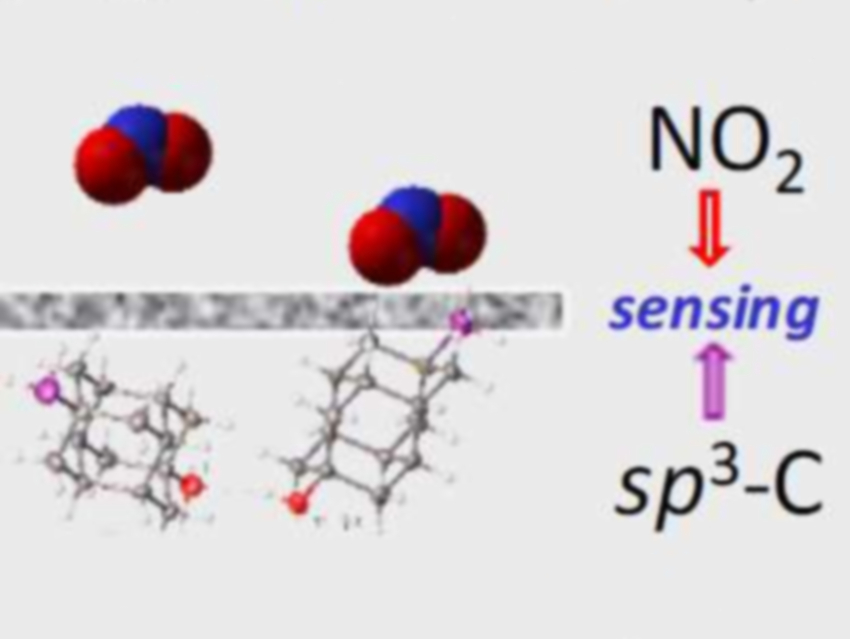Nitrogen dioxide plays a role in acid rain, ozone, and smog formation and, with a human exposure limit of only 3 ppm, the gas is also harmful to human health. Detection of NO2 is important.
Eduard Llobet, University Rovira i Virgili, Tarragona, Spain, Peter R. Schreiner, University of Gießen, Germany, Jean‐Cyrille Hierso, Université de Bourgogne Franche-Comté (UBFC), Dijon, France, and Institut Universitaire de France (IUF), Paris, and colleagues have developed functionalized sp3-hybridized carbon-based nanodiamonds (diamondoids) that detect NO2 and ammonia. The researchers deposited palladium on crystalline assemblies of diamantane functionalized with primary phosphines. The resulting porous nanomaterials are p-type semiconductors with a high specific area up to 140 m2 g–1.
The adsorption of NO2 or NH3 on the diamondoid produces measurable variations in electrical resistance at levels below the threshold limit for human exposure. The gas response is fully reversible at room temperature. The diamondoid-based sensors demonstrate high stability in variable environmental conditions. The team believes that such gas sensors could be widely used in wireless air-quality sensing networks.
- Diamondoid Nanostructures as sp3-Carbon-Based Gas Sensors,
Oana Moncea, Juan Casanova-Chafer, Didier Poinsot, Lukas Ochmann, Clève D. Mboyi, Houssein O. Nasrallah, Eduard Llobet, Imen Makni, Molka El Atrous, Stéphane Brandès, Yoann Rousselin, Bruno Domenichini, Nicolas Nuns, Andrey A. Fokin, Peter R. Schreiner, Jean-Cyrille Hierso,
Angew. Chem. Int. Ed. 2019.
https://doi.org/10.1002/anie.201903089



